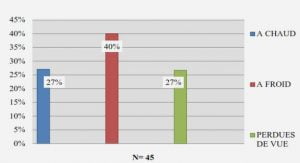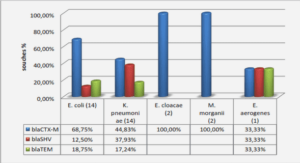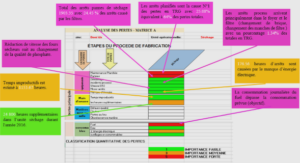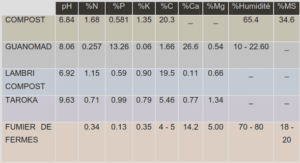For more than 20 years, ice core drillings have been recovered in the South American Central Andes glaciers at altitudes higher than 6000 m a.s.l. between 0◦and 20◦S, in order to reconstruct past tropical climate variability (see Thompson et al., 1995, 1998, 2000; Ramirez et al., 2003, for some examples). While Antarctic deep ice cores cover our climate history back to about 800,000 years albeit with a raw temporal resolution (EPICA, 2004), Andean ice cores allow to reconstruct past environmental changes only back to about 20,000 years, but with a higher temporal resolution varying from seasonal cycles over the last centuries to a few years over the last millennium (Vimeux et al., 2009).
The multi-proxy analytical approach previously used for polar studies, and mainly focused on water stable isotopes, ice chemical composition and insoluble particle content, has been applied to the tropical ice cores to obtain environmental and climatic parameters at high resolution. It was generally possible to establish seasonally resolved dating along the upper half part of the cores, i.e. at most over the last centuries (Simões et al., 2003; de Angelis et al., 2003). Postdepositional studies have also been conducted to better constrain the air-snow transfer-function for tropical glaciers, which is essential when reconstructing past mass balance and atmospheric composition (Ginot et al., 2001; Stichler et al., 2001). Thus, the climate variability at different timescales has been well documented at both low and high latitudes and using the same kind of archives .
However, a large gap exists along the Equator-Pole transect at mid southern latitudes, between 35◦S and 60◦S (Antarctic Peninsula). The documentation of past climate variability through continental archives in the Southern Hemisphere is very poor. Although marine sediment cores allow to reconstruct the past sea surface temperature history, only scarce data obtained at low temporal resolution are available at these latitudes. For instance, the influence of the recent global warming or El Niño-La Niña events on Patagonian glaciers is poorly documented.
State of the art for Patagonian ice cores study before the SANVALLOR project
Many shallow ice cores have been drilled in Patagonia by different international groups during the past decades (Aristarain and Delmas, 1993; Matsuoka and Naruse, 1999; Shiraiwa et al., 2002, for the most recent examples). All these studies (mostly located in the Southern Patagonian Icefield) concerned glaciers at elevation lower than 2500 m a.s.l. where firn temperature close to 0◦C does not allow a proper preservation of isotopic and chemical signals. Some soluble impurities are partly or totally (depending on the site) washed out making very questionable the interpretation of the glaciochemical profiles in term of past climate fluctuations. Moreover, all these sites have a very high annual accumulation rate (more than several meters per year), not suitable for paleoreconstructions. On the opposite, we found two glaciers at altitudes higher than 3500 m a.s.l., covered by several tens of meters of cold ice, and where the annual snow accumulation rate is moderate.
The first site is the Monte San Valentin glacier (henceforward SV), the highest point of the Patagonian chain at ∼4000 m a.s.l., located on the Northern Patagonian Icefield (NPI). The second site is the San Lorenzo glacier at 3500 m a.s.l. Both sites appeared suitable for drilling operations (flat plateau-like surface and low ice flow) and appropriate to study the climate variability at various time scales (ENSO events as well as the glacial-interglacial transition) and to provide valuable information on the Equator-Pole connection. The drilling of two ice cores was mainly motivated by the very different meteorological conditions expected to prevail at these two sites: the SV summit is located on the border of the humid area strongly influenced by the Pacific Ocean, while the San Lorenzo (∼100 km farther south-east) is located in the arid side of the Andes, likely under more continental and/or Atlantic influence. Moreover, concerning regional climate conditions, it was interesting to study two cores in order to investigate the very local variability when studying the imprint of specific short events at those latitudes (such as the Little Ice Age).
Preliminary studies at Monte San Valentín
Site survey (march 2005)
Pre drilling site surveys of the Monte San Valentín and Cerro San Lorenzo were done in march 2005 by members of the Great Ice research unit of the IRD (Institut de Recherche pour le Développement, France) and the CECS (Centro de Estudios Científicos, Valdivia, Chile). The San Lorenzo site survey demonstrated that the ice was too warm (∼0 ◦C) to allow suitable paleoclimate reconstructions. It was then decided to explore the summit plateau of the SV (46◦350S, 73◦190W), located on the north eastern border of the NPI, in the upper accumulation area of Glacier San Rafael (Rivera et al., 2007). The summit of Monte San Valentin has been assigned an altitude of 3910 m a.s.l. in the Chilean official maps (IGM, 1975), but a more precise altitude of 4032±1 m a.s.l. has been recently calculated using differential GPS (Wendt 2007, pers. comm.). It has an east-west extension of 1.5 km and spans an altitude range between 3700 m a.s.l and 3900 m a.s.l. It covers an area of about 2.1 km² and it is delimited by steep walls and icefalls .
A 15.26 m long and 58 mm diameter shallow firn core (denoted SV2005 in the manuscript) was extracted on March 2005 on the summit plateau of SV site using the portable solar-powered electromechanical drilling system described by Ginot et al. (2002) (http://www.canal.ird.fr/ sommaires/missions_cp.htm). The drilling site (46◦3501900S, 73◦1903900S, 3747 m a.s.l.) was chosen at the central section of the plateau, in the summit saddle area between the eastern and western peaks .
The 2005 firn core main results
The 15 m firn core extracted in 2005 was analysed in 2006 (Vimeux et al., 2008). The water stable isotopes content was analyzed at the LSCE (Laboratoire des Sciences du Climat et de l’Environnement, Saclay) in collaboration with the University of Copenhagen. Depth resolution was approximately 10 cm for the two isotopes, deuterium and oxygen-18. Ionic species and radionuclides were analyzed at the LGGE (Laboratoire de Glaciologie et Géophysique de l 0Environnement, Grenoble). The sampling resolution for ion analysis was approximately 5 cm. 7Be (half time life: 54 days) was measured in the upper part of the core. The 210Pb profile (half time life: 22.3 years) was established for the total length of the core. 137Cs, 241Am and 3H (nuclear tests fallout of 1963-1965) were measured in the lower part of the core.
|
Table des matières
1 Analytical methods and complete chemical profile
1.1 Introduction
1.2 Analytical methods
1.2.1 Ion chromatography (IC)
1.2.2 Microscopy
1.3 Complete ionic profiles
1.3.1 Comparison between the chemical profiles of 2005 (SV2005) and 2007 (CL122)
1.4 Dating hypothesis and spatial variability of the register at SV site
1.4.1 Dating hypothesis
1.4.2 Spatial variability of the register at the SV site
1.5 Conclusions
2 Climatology on the Northern Patagonian Icefield
2.1 Motivations
2.2 Introduction
2.2.1 Wind and synoptic features at mid-latitudes
2.2.2 Precipitation at mid-latitudes and in Patagonia
2.2.3 Climatic and glaciological studies at the NPI region
2.3 Methodology
2.3.1 Datasets
2.3.2 Comparison and validation of used datasets
2.3.3 Methodology used for trajectory calculations and their relationship with precipitation events at SV
2.4 Results
2.4.1 SV precipitation compared to continental and coastal stations
2.4.2 Seasonality of predicted precipitation and temperature by PRECIS and GFS models (2005-2007)
2.4.3 Backtrajectories and precipitation dependency on wind direction
2.4.4 Long-term mean precipitation compared to 2005-2007 period and implications on accumulation hypotheses
2.5 Conclusions
3 Marine contributions to San Valentin ice
3.1 Motivations
3.2 Introduction
3.2.1 The oceanic contribution in terms of chemical tracers
3.2.2 Water stable isotopes
3.3 Methodology
3.3.1 Data distribution and peak definition
3.3.2 Correlation matrices and species ratios
3.3.3 Non-sea-salt contributions
3.3.4 Ionic balance
3.4 Results
3.4.1 Primary aerosol
3.4.2 Marine biogenic contribution
3.5 Conclusions
4 Continental contributions to San Valentin ice
4.1 Motivations
4.2 Introduction
4.2.1 Biomass combustion
4.2.2 Urban centers, industrial emissions
4.2.3 Natural and agricultural soils and manure emissions
4.2.4 Vegetation emissions
4.2.5 Volcanoes
4.2.6 Dust particles from erodible soils
4.3 Methodology
4.4 Results
4.4.1 Non marine sulfate
4.4.2 NH+4 major contributions
4.4.3 Minor ammonium contributions: soils and vegetation emissions?
4.4.4 Background ammonium contributions: the intricate contribution of NO−3 , SO2−4 , and Cl−exc
4.4.5 Proposed dating horizons
4.4.6 Other continental inputs
4.5 Conclusions
![]() Télécharger le rapport complet
Télécharger le rapport complet




